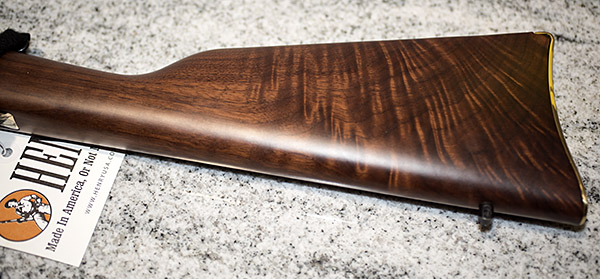
I’m about a week away from having sufficiently cooled (at least in the Peoples Republik of Kalifornia’s eyes), which is another way of saying I have 7 days left until my 10-day waiting period is over, and then I’ll be able to pick up my new Henry .45 70 Single Shot. (“Single Shot” is capitalized because it’s a proper noun; it’s Henry’s official name for this rifle.)

I am loading a series of cartridges to test for accuracy in the new Henry and I’m going to tell you about the loads, but before I get into that I want to tell you about the three levels of reloads you find in the .45 70 reloading manuals. I’ll post about the different loads (and reloading those rounds) in the next blog.
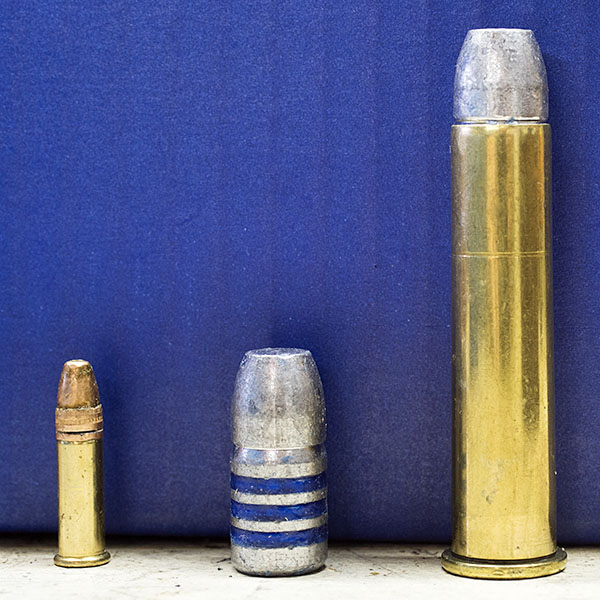
.45 70 History
I’ve been a student of the .45 70 for close to 50 years, and the cartridge is nearly 150 years old. One of the best sources of information on the early .45 70 rifles is Jack Behn’s touchstone reference shown below.
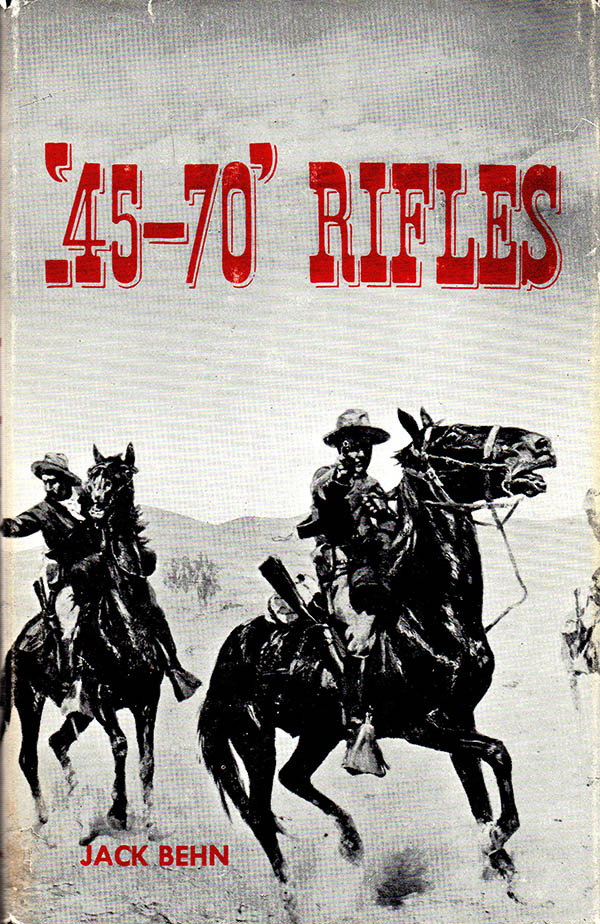
At the end of the Civil War, the Army knew it needed a breechloading rifle (one that loaded from the rear with metallic cartridges). This resulted in development of the 1873 Springfield rifle and the .45 70 500 cartridge, so designated because it fired a 500-grain, .458-inch diameter lead cartridge propelled by 70 grains of black powder. That was later changed to a 405-grain lead cartridge because soldiers complained that recoil with the 500-grain projectile was excessive.
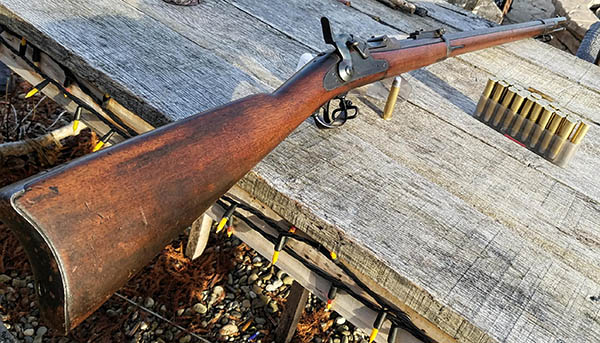
That .45 70 Trapdoor Springfield remained in service from 1873 through the Spanish American War and our wars against the Plains Indians. It was also the rifle most frequently used by buffalo hunters to nearly exterminate the American bison, which was really little more than an extension of the war against the Indians (it’s not widely known, but the dominant reason the U.S. Government encouraged eradication of the American bison was because it was the principal source of food, shelter, and clothing for the Indians).
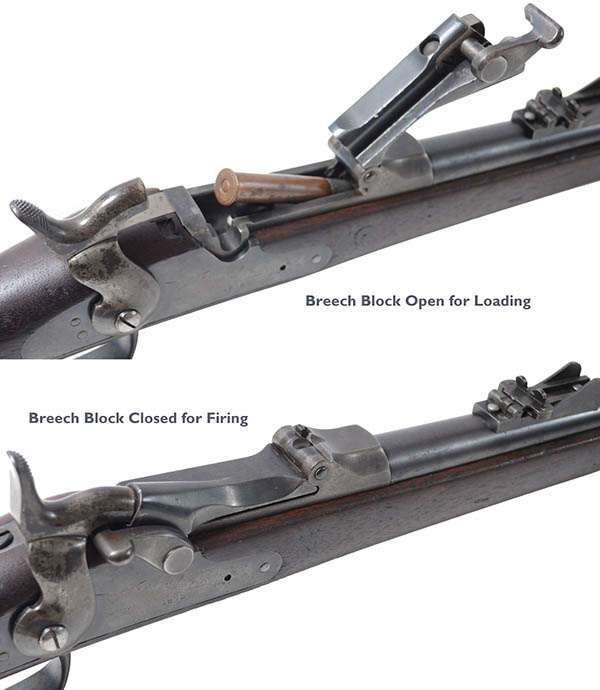
Trapdoor Springfield .45 70 Loads
The “Trapdoor” designation for the 1873 Springfield refers to the action design. The Springfield’s action had a hinged element that rotated forward to allow loading a cartridge, which was then closed and locked in place prior to firing a round. It was state of the art in 1873, but it was inherently weak and limited the pressures to which ammunition could be loaded. But it was enough. The Springfield action could withstand pressures up to around 17,000 psi, sufficient to launch a 405-grain projectile at velocities a little north of 1400 feet per second. It was more than enough to kill a man, and in fact, it was enough to kill a buffalo.
Winchester and Marlin .45 70 Loads
The .45 70 cartridge had a lot going for it, and in 1886, Winchester introduced a .45 70 lever action repeater (their Model 1886). Marlin had previously introduced a .45 70 lever action repeater in 1881. The Winchester and Marlin rifles had two advantages: They could fire repeatedly by operating the lever action and squeezing the trigger, and the lever gun actions were stronger (so they could be loaded to higher pressures with resulting higher velocities). I don’t know that any of the ammo companies loaded the cartridge to the higher pressures the Winchester and Marlin rifles could handle back in those days (probably out of a fear that the ammo might be used in the weaker Springfield action), but folks who reload today and who have either a Marlin or a Winchester can load their ammunition to the higher levels allowed by the lever gun receivers.
The reloading manuals show that the Model 1895 Marlin and Model 1886 Winchester lever actions can handle chamber pressures in the 27,000 psi range. That’s enough to drive a 405-grain bullet out at about 1700 feet per second. That’s a smoking hot load.

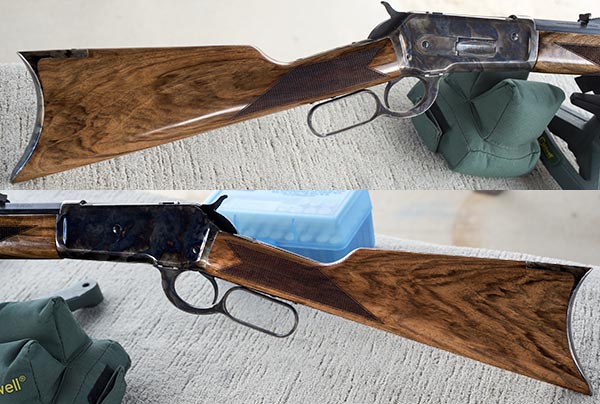
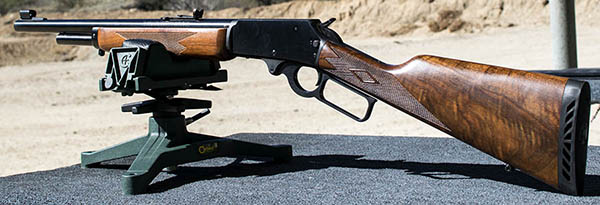
Ruger No. 1 and No. 3 .45 70 Loads
The next step in the .45 70 evolutionary chain? That would be the single shot rifles offered by Ruger starting in the 1970s. Ruger had two: Their No. 1 rifle and the No. 3. Both use the same action, and it’s strong. In the Ruger rifles, you can load .45 70 ammunition to nearly the same velocities and the same pressures as a .458 Winchester Magnum, which is to say, crazy levels (at least in terms of recoil). Ruger rifles chambered in .45 70 can handle pressures approaching 40,000 psi, with 405-grain bullet velocities north of 2,000 feet per second. I’ve done this. It’s no fun.

.45 70 Loads: The Bottom Line
The upshot of all this? There are three levels to which you can reload .45 70 ammunition: The Trapdoor Springfield level, the 1886 Winchester/Marlin level, and the Ruger level. When you see this in a reloading manual, you’ll see three sets of reloading data, designated separately as explained in this blog.
What does all this mean in the real world? Your mileage may vary, but for me, I never venture into the Marlin/Winchester and Ruger .45 70 reloading levels. There’s just too much recoil, and you don’t need to go there for accuracy. I would argue further that you don’t need to go there for lethality (the .45 70 in 1873 Trapdoor Springfields killed a lot of buffalo). I stick to the Springfield levels for all of my rifles (even though I could go higher), and that’s how I’m going to load for the new Henry rifle, too.
More Tales of the Gun here, including detailed info on each of the rifles shown above!

When I was much younger and even more foolish I acquired a Ruger #3 carbine, it weighed about 6 pounds and was equipped with a curved metal buttplate. I experimented with upper level loads running a Hornady 350 grain bullet about 2200 fps and I can second your comment, it was no fun!
I think anybody who has ever owned a Ruger No. 1 or No. 3 (and who reloads) has done the same, and reached the same conclusion. It’s even worse with the No. 3 in .45 70, as the No. 3 rifles all have the same exterior barrel dimensions and because the bore is so large, it is the lightest of the No. 3 rifles. A .45 70 No. 3 is easy to carry, but wow, do they ever pack a wallop with the warmer loads. That’s why I stick to the Trapdoor-level loads.